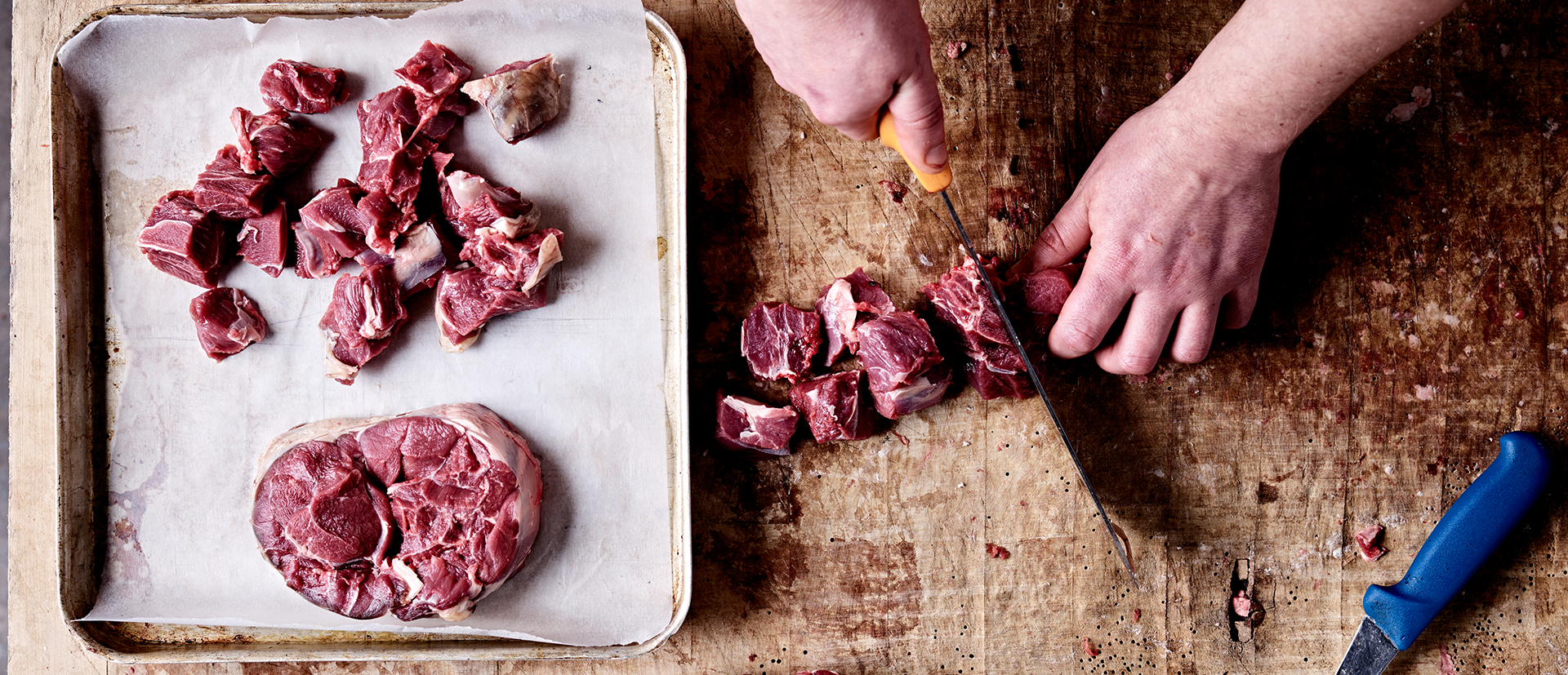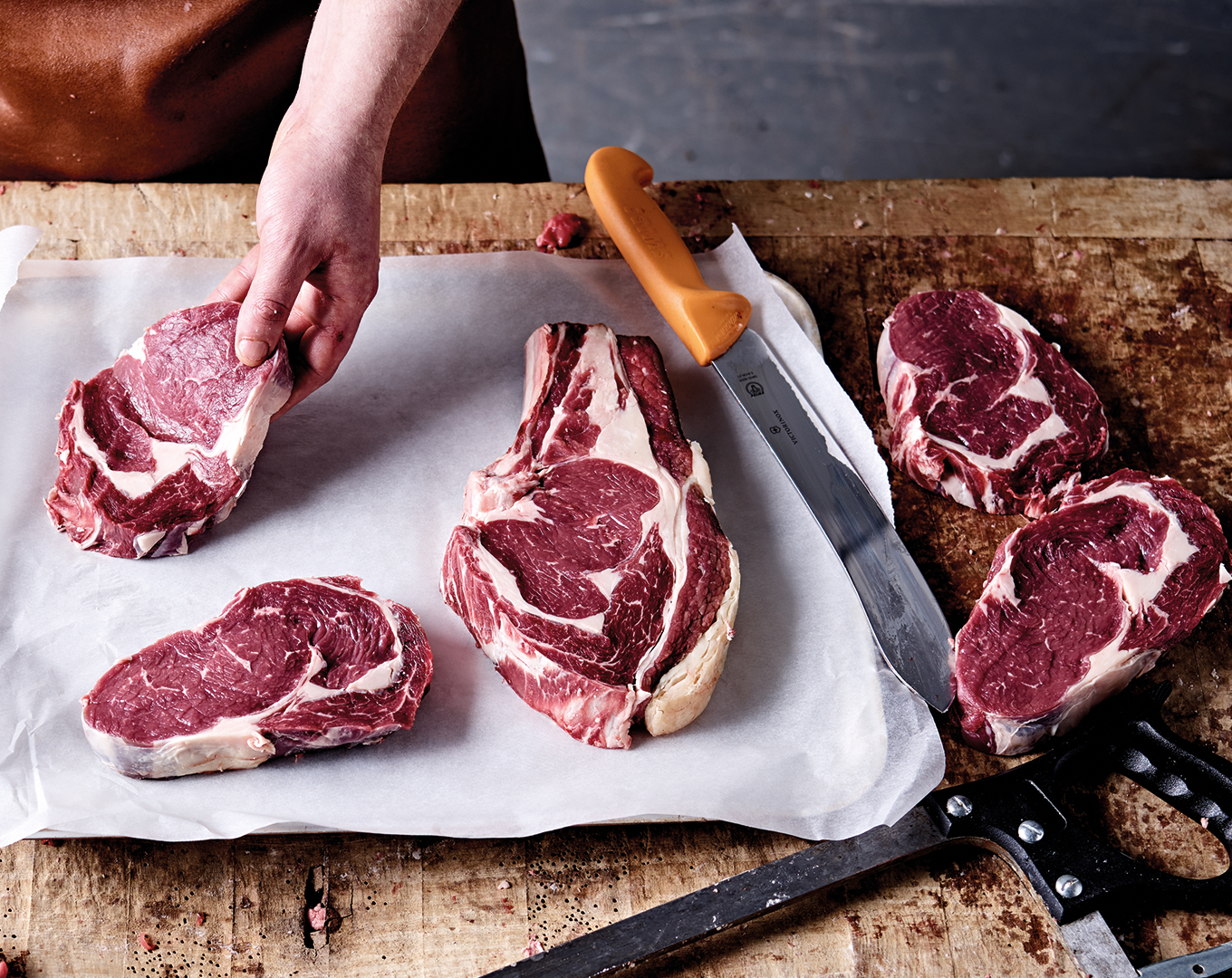Looking at the supermarket shelves, you might think pigs, cows and sheep were made up of legs, chops, steaks and mince. In reality, there’s a whole other butcher’s shop of cuts to be enjoyed and it’s our mission to bring them to you.
Before agriculture became industrial and commercialised, the countryside was a patchwork of smallholdings and modest farms. Animals lived in small flocks or herds and were treasured for milk, eggs and wool as well as for meat. This meant that when an animal was slaughtered, every last bit of the carcass was precious. As well as enjoying the obviously meaty muscles, people derived valuable nutrition from the vitamin-and-mineral packed offal, they extracted gelatin from trotters and sought out the sweetbreads (the thymus gland and pancreas) as delicacies.

.png)
.png)
Fast forward to today. We’re surrounded by food and bombarded by advertising for meals that require little effort on our parts. Meat has become an anonymous commodity that’s eaten probably more often than it should be, and the consumer has no sense of connection with the animal from which it came. Through the buying and influencing power of supermarkets, we’ve become used to a very limited select variety of cuts that are packaged to look as unlike an animal as possible. Legs, shoulders, steaks and chops dominate fresh meat counters. So what’s happening to the rest?
A lot of the less in-demand cuts will end up as mince, as ingredients in ready meals, as pet food or as waste. This is a long way from the days when every part of a carcass was appreciated. Which makes us very unhappy. Because not only are people missing out on some really extraordinary cuts but also because it lacks consideration for the life of the animal and for the efforts made by the farmer who reared it. Producing meat the old-fashioned way (which is what we do) takes a long time, requires a lot of expertise and isn’t cheap.
For this reason, at The Organic Butchery we’re fully on board with the idea of nose-to-tail eating. For us, that means our butchers make the most of every carcass that crosses their blocks. It also means we offer cuts that you may not see in your local butcher’s shop and will certainly never see in the supermarket.
One way to think about the potential for wastage if we’re picky about which bits we eat is to consider what one animal yields. On a beef carcass, there’s only one hanger steak and two fillets, both of which are in high demand. But once the popular cuts are gone, there’s still a lot left. If you’re a dedicated beef-steak or pork-chop eater, you’ll be astonished by the huge variety of cuts that can come from one pig, bullock or lamb.
The good news is that as meat-eating horizons have narrowed, the less popular cuts have become cheaper. What some have working against them (heart, for example) is the fact that they actually look like part of an animal. So a reset is required on squeamishness, which we appreciate may take time.
With the idea of waste sitting very uneasily on our consciences, we’d like to encourage you to come with us on our nose-to-tail journey. Revive some of those old-school recipes your grandparents loved and discover all sorts of delicious cuts you’ve never heard of. Try a rolled and stuffed lamb breast instead of a leg of lamb for Sunday lunch. Choose beef shin where you might use short ribs, or replace diced pork with pork cheeks to make a luscious, slow-cooked winter casserole. It takes a tiny bit of imagination, but we’re always here to help with ideas and we promise it’ll be worth it.
What Does 'Marbling' Mean?
You may have heard the word ‘marbling’ bandied around. It’s considered to be the holy grail of steaks and roasting joints, delivering meat that’s sumptuous and packed with flavour. But what actually is marbling?
As the name suggests, it’s when the muscle and fat in a cut of meat resemble a piece of marble, like your kitchen worktop for example. The flecks and seams of white are fat – intramuscular fat to be precise. It’s the most obvious way to judge the quality of a piece of meat. But why is it an indicator of quality?
Read More


.png)
